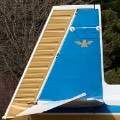VFR vs IFR in VMC
-
Members Online
- 00-Negative
- amillet
- korbike
- katzhome
- Hudd
- 65MooneyPilot
- spistora
- Schllc
- Red Leader
- eman1200
- Rogerg
- Ibra
- Greg Ellis
- raymondscott0321
- TCC
- EricShr
- CCAS
- GeeBee
- hazek
- Danb
- Aaviationist
- lotsofgadgets
- dmevans
- AgFlyer
- Will.iam
- Mathias
- BrianWilkins
- midlifeflyer
- cbarry
- MarkD34M
- Fly Boomer
- dzeleski
- BlueSky247
- Stealth Mooney
- LANCECASPER


Recommended Posts
Join the conversation
You can post now and register later. If you have an account, sign in now to post with your account.